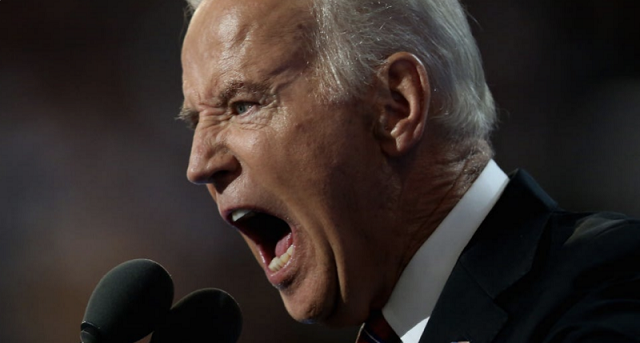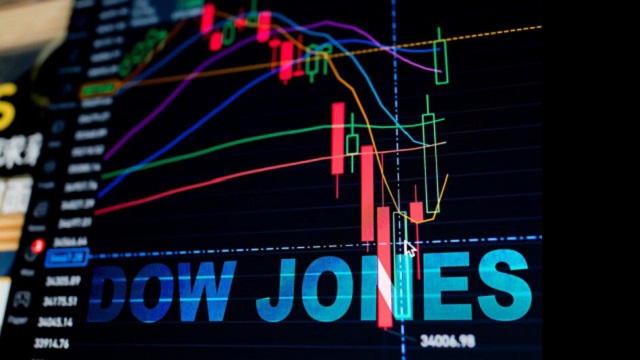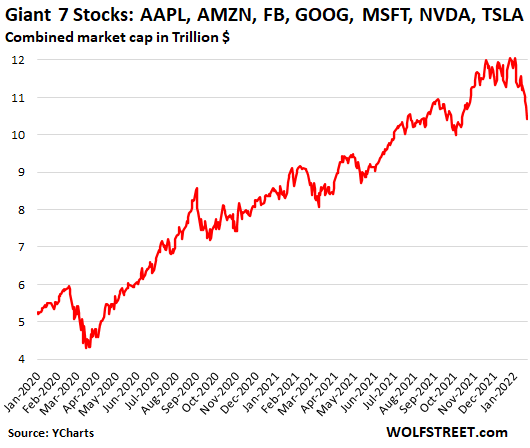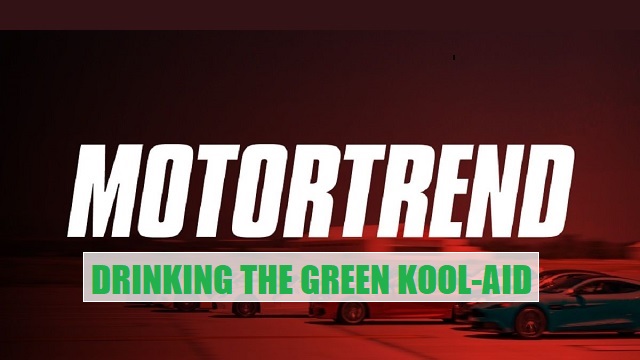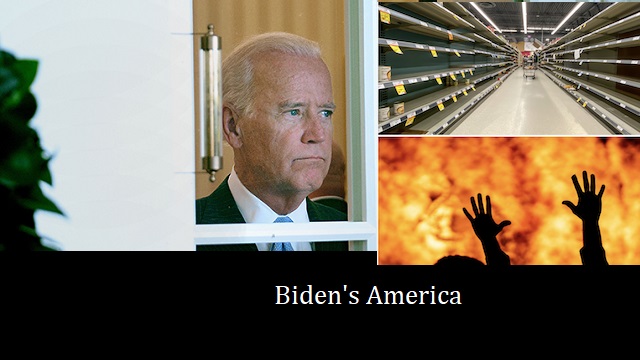By Dr. Rich Swier
Motor Trend in its January 2022 edition named the yet to be mass produced Lucid all EV sedan as Car of the Year. But why?
This is at a time when Motor Trend’s Angus MacKenzie in an article about an ICE car, the GMA T.50, ended by saying,
Is MacKenzie drinking the Green All EV Kool-Aid? Is he listening to Al Gore, Green New Deal proponent Alexandra-Ocasio Cortez, Swedish climate activist Greta Thunberg and Joe Biden more than he’s listening to American consumers?
Motor Trend, by drinking the Green All Electric Vehicle Kool-Aid, will do great damage to individuals, families, communities, states and America.
Batteries are not emissions free and certainly contribute to so called “Climate Change” yet activists who push the persistent, persuasive and unrealistic myths of Climate Change are also advocates for “alternative power sources” including solar, wind and battery powered devices like all electric cars.
By Bruce Haedrich
When I saw the title of this lecture, especially with the picture of the scantily clad model, I couldn’t resist attending. The packed auditorium was abuzz with questions about the address; nobody seemed to know what to expect. The only hint was a large aluminum block sitting on a sturdy table on the stage. When the crowd settled down, a scholarly-looking man walked out and put his hand on the shiny block, “Good evening,” he said, “I am here to introduce NMC532-X,” and he patted the block, “we call him NM for short,” and the man smiled proudly.
“NM is a typical electric vehicle (EV) car battery in every way except one; we programmed him to send signals of the internal movements of his electrons when charging, discharging, and in several other conditions. We wanted to know what it feels like to be a battery. We don’t know how it happened, but NM began to talk after we downloaded the program.
Despite this ability, we put him in a car for a year and then asked him if he’d like to do presentations about batteries. He readily agreed on the condition he could say whatever he wanted. We thought that was fine, and so, without further ado, I’ll turn the floor over to NM,” the man turned and walked off the stage..
“Good evening,” NM said. He had a slightly affected accent, and when he spoke, he lit up in different colors. “That cheeky woman on the marquee was my idea,” he said. “Were she not there, along with ‘naked’ in the title, I’d likely be speaking to an empty auditorium! I also had them add ‘shocking’ because it’s a favorite word amongst us batteries.” He flashed a light blue color as he laughed. “Sorry,” NM giggled then continued, “three days ago, at the start of my last lecture, three people walked out. I suppose they were disappointed there would be no dancing girls.
But here is what I noticed about them. One was wearing a battery-powered hearing aid, one tapped on his battery-powered cell phone as he left, and a third got into his car, which would not start without a battery. So, I’d like you to think about your day for a moment; how many batteries do you rely on?”
He paused for a full minute which gave us time to count our batteries. Then he went on, “Now, it is not elementary to ask, ‘what is a battery?’ I think Tesla said it best when they called us Energy Storage Systems. That’s important. We do not make electricity – we store electricity produced elsewhere, primarily by coal, uranium, natural gas-powered plants, or diesel-fueled generators. So, to say an EV is a zero-emission vehicle is not at all valid. Also, since forty percent of the electricity generated in the U.S. is from coal-fired plants, it follows that forty percent of the EVs on the road are coal-powered, n’est-ce pas?”
He flashed blue again. “Einstein’s formula, E=MC2, tells us it takes the same amount of energy to move a five-thousand-pound gasoline-driven automobile a mile as it does an electric one. The only question again is what produces the power? To reiterate, it does not come from the battery; the battery is only the storage device, like a gas tank in a car.”
He lit up red when he said that, and I sensed he was smiling. Then he continued in blue and orange. “Mr. Elkay introduced me as NMC532. If I were the battery from your computer mouse, Elkay would introduce me as double-A, if from your cell phone as CR2032, and so on. We batteries all have the same name depending on our design. By the way, the ‘X’ in my name stands for ‘experimental..’
There are two orders of batteries, rechargeable, and single use. The most common single-use batteries are A, AA, AAA, C, D. 9V, and lantern types. Those dry-cell species use zinc, manganese, lithium, silver oxide, or zinc and carbon to store electricity chemically. Please note they all contain toxic, heavy metals. Rechargeable batteries only differ in their internal materials, usually lithium-ion, nickel-metal oxide, and nickel-cadmium.
The United States uses three billion of these two battery types a year, and most are not recycled; they end up in landfills. California is the only state which requires all batteries be recycled. If you throw your small, used batteries in the trash, here is what happens to them.
All batteries are self-discharging. That means even when not in use, they leak tiny amounts of energy. You have likely ruined a flashlight or two from an old, ruptured battery. When a battery runs down and can no longer power a toy or light, you think of it as dead; well, it is not. It continues to leak small amounts of electricity. As the chemicals inside it run out, pressure builds inside the battery’s metal casing, and eventually, it cracks. The metals left inside then ooze out. The ooze in your ruined flashlight is toxic, and so is the ooze that will inevitably leak from every battery in a landfill. All batteries eventually rupture; it just takes rechargeable batteries longer to end up in the landfill.
In addition to dry cell batteries, there are also wet cell ones used in automobiles, boats, and motorcycles. The good thing about those is, ninety percent of them are recycled. Unfortunately, we do not yet know how to recycle batteries like me or care to dispose of single-use ones properly.
But that is not half of it. For those of you excited about electric cars and a green revolution, I want you to take a closer look at batteries and windmills and solar panels. These three technologies share what we call environmentally destructive embedded costs.”
NM got redder as he spoke. “Everything manufactured has two costs associated with it, embedded costs and operating costs. I will explain embedded costs using a can of baked beans as my subject.
In this scenario, baked beans are on sale, so you jump in your car and head for the grocery store. Sure enough, there they are on the shelf for $1.75 a can. As you head to the checkout, you begin to think about the embedded costs in the can of beans.
The first cost is the diesel fuel the farmer used to plow the field, till the ground, harvest the beans, and transport them to the food processor. Not only is his diesel fuel an embedded cost, so are the costs to build the tractors, combines, and trucks. In addition, the farmer might use a nitrogen fertilizer made from natural gas.
Next is the energy costs of cooking the beans, heating the building, transporting the workers, and paying for the vast amounts of electricity used to run the plant. The steel can holding the beans is also an embedded cost. Making the steel can requires mining taconite, shipping it by boat, extracting the iron, placing it in a coal-fired blast furnace, and adding carbon. Then it’s back on another truck to take the beans to the grocery store. Finally, add in the cost of the gasoline for your car.
But wait – can you guess one of the highest but rarely acknowledged embedded costs?” NM said, then gave us about thirty seconds to make our guesses. Then he flashed his lights and said, “It’s the depreciation on the 5000-pound car you used to transport one pound of canned beans!”
NM took on a golden glow, and I thought he might have winked. He said, “But that can of beans is nothing compared to me! I am hundreds of times more complicated. My embedded costs not only come in the form of energy use; they come as environmental destruction, pollution, disease, child labor, and the inability to be recycled.”
He paused, “I weigh one thousand pounds, and as you see, I am about the size of a travel trunk.” NM’s lights showed he was serious. “I contain twenty-five pounds of lithium, sixty pounds of nickel, 44 pounds of manganese, 30 pounds cobalt, 200 pounds of copper, and 400 pounds of aluminum, steel, and plastic. Inside me are 6,831 individual lithium-ion cells.
It should concern you that all those toxic components come from mining. For instance, to manufacture each auto battery like me, you must process 25,000 pounds of brine for the lithium, 30,000 pounds of ore for the cobalt, 5,000 pounds of ore for the nickel, and 25,000 pounds of ore for copper. All told, you dig up 500,000 pounds of the earth’s crust for just – one – battery.”
He let that one sink in, then added, “I mentioned disease and child labor a moment ago. Here’s why. Sixty-eight percent of the world’s cobalt, a significant part of a battery, comes from the Congo. Their mines have no pollution controls, and they employ children who die from handling this toxic material. Should we factor in these diseased kids as part of the cost of driving an electric car?” NM’s red and orange light made it look like he was on fire.
“Finally,” he said, “I’d like to leave you with these thoughts. California is building the largest battery in the world near San Francisco, and they intend to power it from solar panels and windmills. They claim this is the ultimate in being ‘green,’ but it is not! This construction project is creating an environmental disaster. Let me tell you why.
The main problem with solar arrays is the chemicals needed to process silicate into the silicon used in the panels. To make pure enough silicon requires processing it with hydrochloric acid, sulfuric acid, nitric acid, hydrogen fluoride, trichloroethane, and acetone. In addition, they also need gallium, arsenide, copper-indium-gallium-diselenide, and cadmium-telluride, which also are highly toxic. Silicon dust is a hazard to the workers, and the panels cannot be recycled.
Windmills are the ultimate in embedded costs and environmental destruction. Each weighs 1688 tons (the equivalent of 23 houses) and contains 1300 tons of concrete, 295 tons of steel, 48 tons of iron, 24 tons of fiberglass, and the hard to extract rare earths neodymium, praseodymium, and dysprosium. Each blade weighs 81,000 pounds and will last 15 to 20 years, at which time it must be replaced. We cannot recycle used blades. Sadly, both solar arrays and windmills kill birds, bats, sea life, and migratory insects.
Going green has a cost that no one is talking about. Motor Trend is working hard to push EVs but to what end?
In the same January 2022 edition of Motor Trend was an article on the Rivian R1T off-road EV. The article notes that in order to power their test vehicle Rivian “donated chargers to many of the hotels and campgrounds along the [test] route.”
That’s one of many issues with EVs, getting their battery charged.
ICE vehicles will continue to trump all EV vehicles. Here are some reasons for this prediction:
Want to see what going green does? Just look at California.
©Dr. Rich Swier. All rights reserved.









